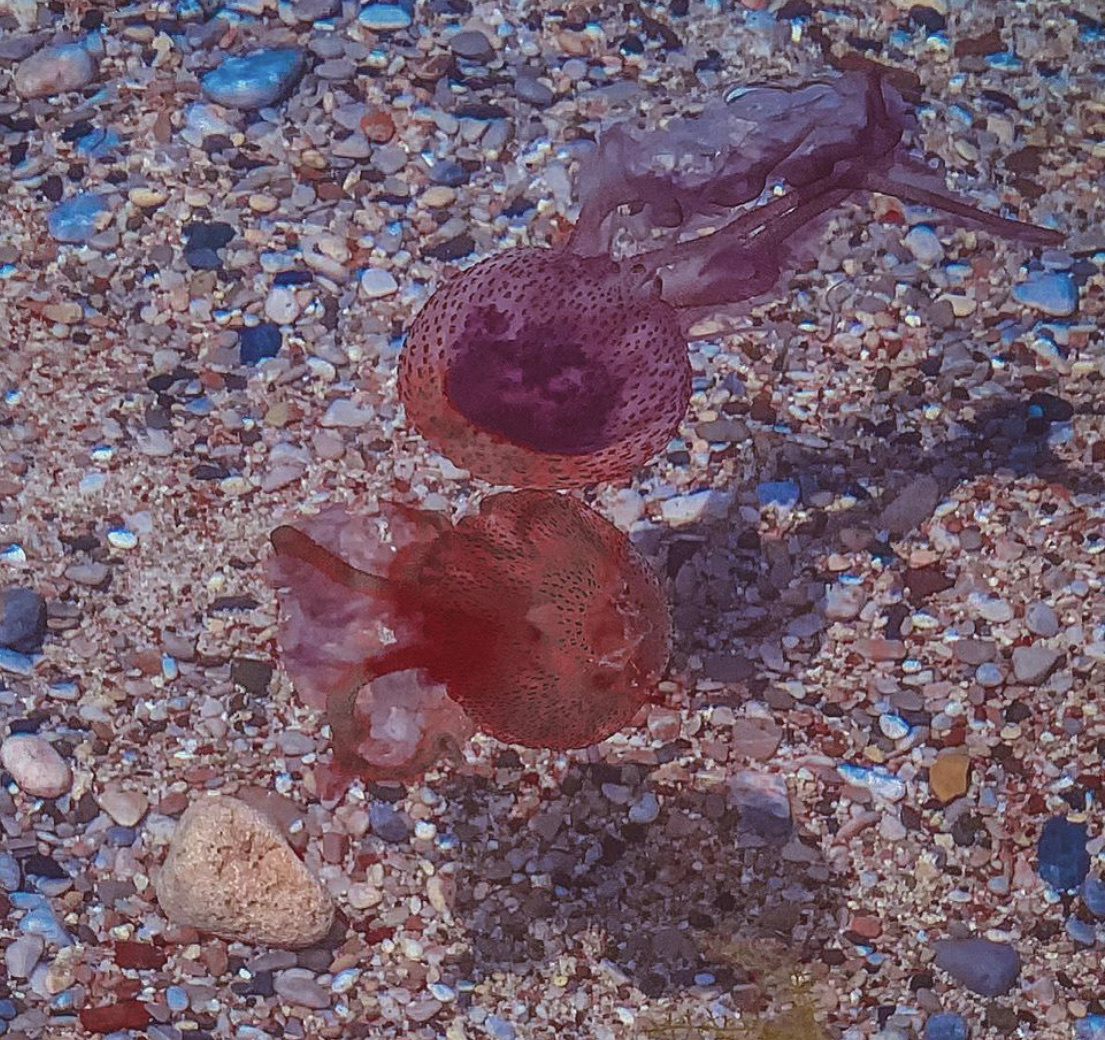Of particular concern is the spread of purple jellyfish at greek seasas according to Hellenic Biodiversity Observatory «the movements of jellyfish that we observed in the winter, have been verified and the spread of purple jellyfish in the Ionian Sea from the beginning of April is now confirmed».
According to the Observatory they have already been recorded purple jellyfish in Zakynthos, Paxos, Antipaxos, Cephalonia, Amvrakikos gulf and Corfu. It is worth noting that experts report that in the coming days the problem will begin to intensify especially in the Ionian.
One of the most dangerous species of jellyfish
The purple jellyfish (Pelagia noctiluca), is considered one of the most dangerous species of jellyfish in the Mediterranean.
Her sting is painful because of the neurotoxin she has. It is recognizable by its four main and eight longer and thinner tentacles, along with a dotted “hat” and purple interior, while it has a usual diameter of 6-10 cm. When it is young its color is orange-brown and when it grows up it takes on this intense purple-purple color.
Symptoms after contact with the purple jellyfish
The symptoms after contact – spurring from the jellyfish can be according to the Hellenic Biodiversity Observatory the following:
- Pain like burningmany times intense redness of the skin, and in some cases, the appearance of the jellyfish imprint on your skin.
- Motion sickness
- Pressure drop
- Tachycardia
- Headache
- Vomiting
- Diarrhea
- Spasm of the bronchi
- Shortness of breath
In case of systemic symptoms (rare) such as: hypotension, hoarseness, inspiratory wheezing, generalized angioedema – extensive urticarial rash, communication-consciousness disorders, vomiting, immediate transport of the patient to the hospital is mandatory.
First aid after a sting
Various methods can be used to reduce the intensity and duration of pain from the purple jellyfish sting. For the bites of some jellyfish species (Carybdea marsupialis, Olindias phosphorica and Physalia physalis) it is recommended to use vinegar applied for a short period of time to prevent the release of further venom under the skin, but not in this case. Vinegar, as well as fresh water, alcohol, ammonia do not help this species, on the contrary they worsen the condition and pain. This jellyfish is inactivated with a slightly alkaline solution (baking soda dissolved in a corresponding amount of sea water) and not with acid.
Detailed care steps:
1. Wash carefully with sea water, without rubbing the sting area.
2. If available, apply a mixture of sea water and baking soda (1: 1) for two minutes to stop any further secretion of venom from possible tentacle cell debris left on the skin.
3. We use a plastic bank card or something similar (and not our hands) to remove the baking soda mixture as well as any residue from our skin
4. Apply ice on the sting for 5-15 minutes. Ice, or even an iced soft drink, should be in a bag or other casing, such as a cloth or T-shirt.
5. Check if the pain has subsided, and if necessary re-apply ice for another 5-15 minutes. If the pain persists, consult a doctor or pharmacist to prescribe painkillers or anti-inflammatory creams (such as 3-4% lidocaine and hydrocortisone).
6. Do not wrap the sting tightly with bandages, do not use vinegar, fresh water, alcohol, or ammonia.
Follow Skai.gr on Google News
and be the first to know all the news
I have worked in the news industry for over 10 years. I have a vast amount of experience in covering health news. I am also an author at News Bulletin 247. I am highly experienced and knowledgeable in this field. I am a hard worker and always deliver quality work. I am a reliable source of information and always provide accurate information.











